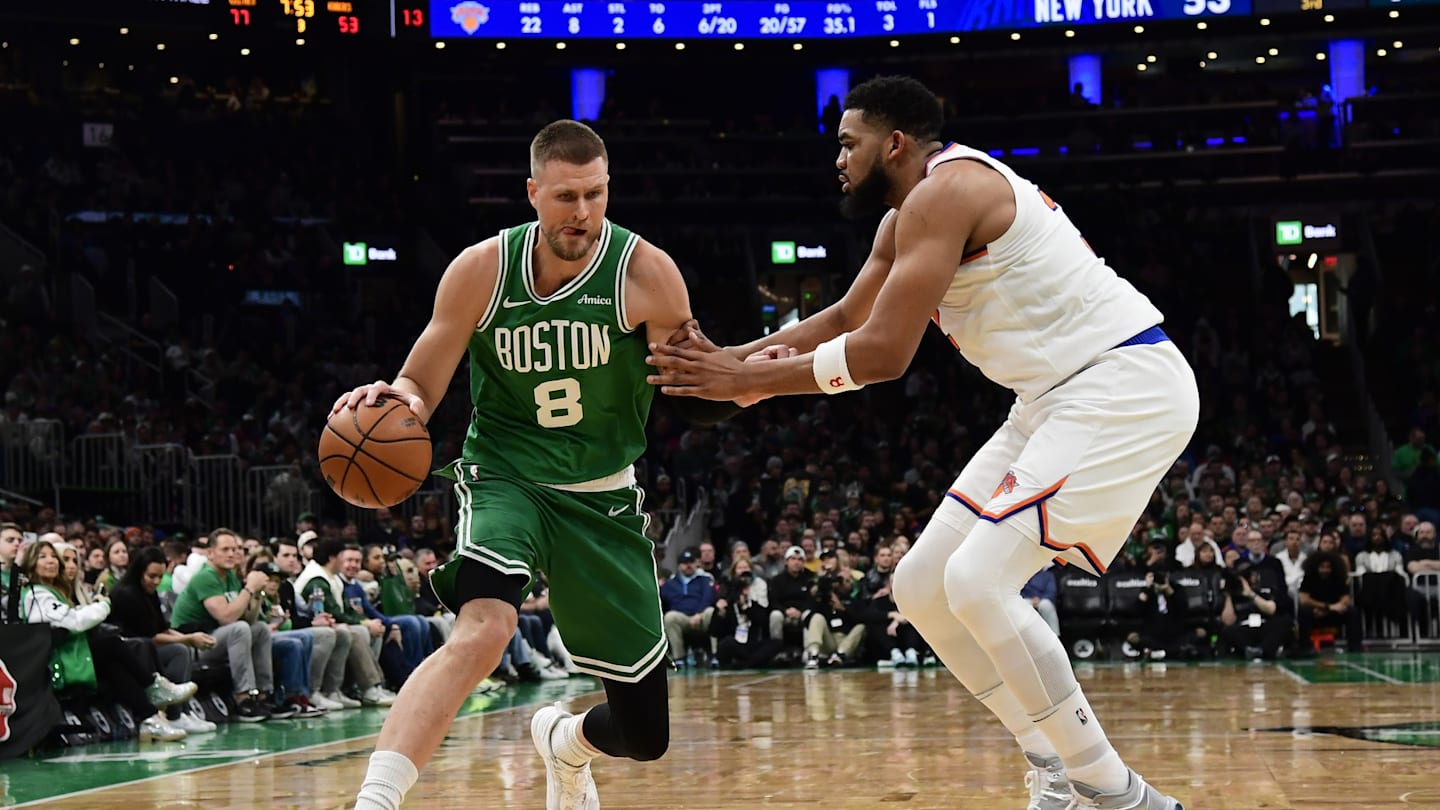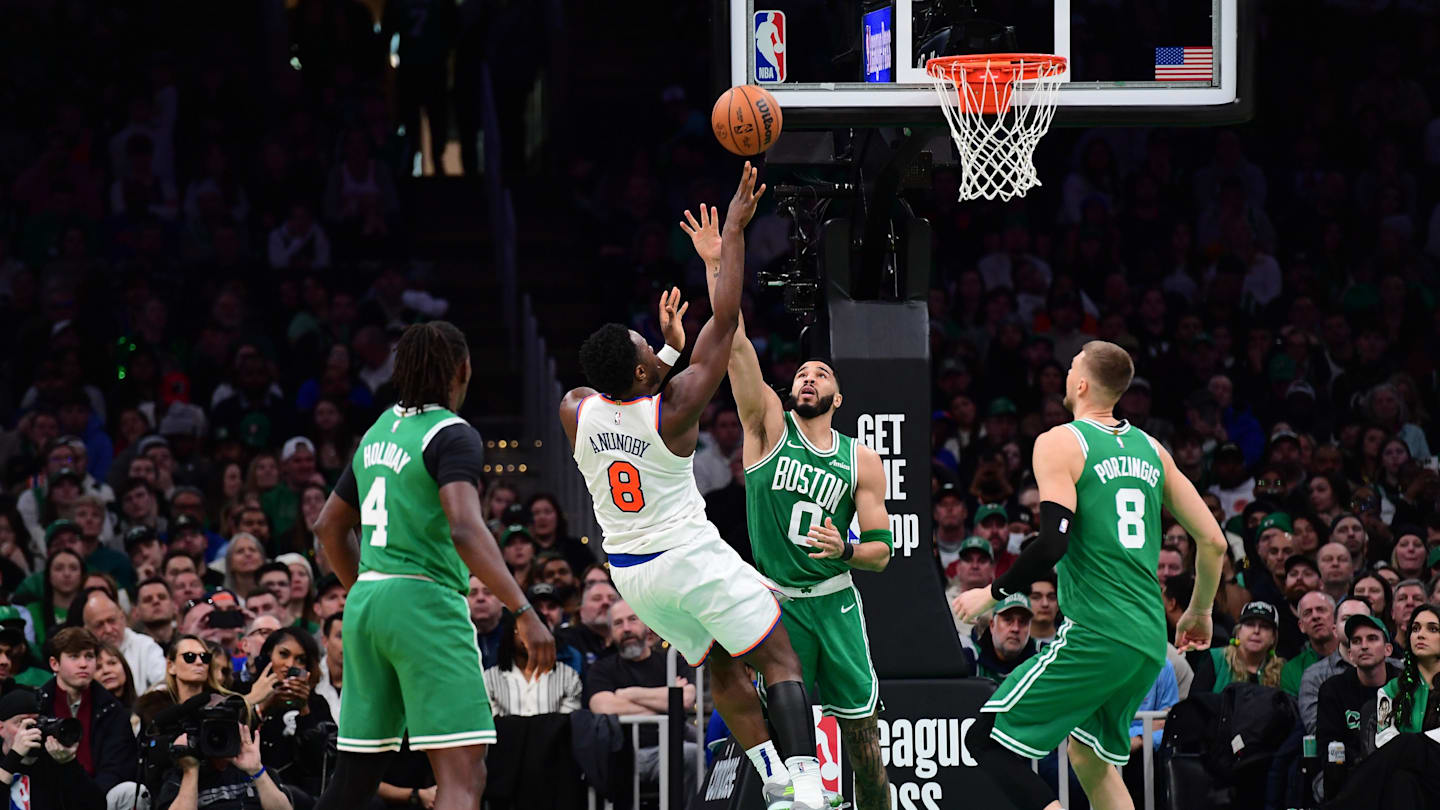Adam Silver: ‘Potentially some adjustments we can make’ to NBA’s style of play, 3-point volume

PARIS — There is an indisputable fact about the NBA right now: teams are taking and making more 3s per game than ever. For some, from fans to Chuck, Shaq and Kenny, that has become a reason to lament the league’s style of play. For others, it is just the natural progression of the NBA as it embraced a shot that has revolutionized offense across the sport.
NBA commissioner Adam Silver has heard the conversation and is looking at what his league can do about it.
“I’m listening to the critics,” he said Thursday night before the first of two San Antonio Spurs-Indiana Pacers games here this week. “I don’t want to overreact, but I think there are potentially some adjustments we can make.”
As the NBA has embraced analytics over the past decade, and increasingly recognized the value of the 3-pointer, teams have adjusted their offenses to shoot more of them, and also created systems that try to produce more 3s and shots at the rim. The strategy has worked as offensive efficiency has leapt significantly; teams are averaging nearly eight more points per 100 possessions than they were during the 2014-15 season.
But that hasn’t come without criticism. As NBA teams try to create the same kinds of shots, a (misguided) sentiment has developed that they all play the same. Or that all those 3s have led to a dip in the league’s television ratings. Or, in a trope that has followed the league for decades, that teams aren’t playing defense.
GO DEEPER
Adam Silver: U.S. kids play too many games, leading to overuse injuries
Still, there are substantive questions that have come up. Silver mentioned that players have become coached to pass on seemingly good, but inefficient, 2-point shots to try to get 3s, which, he said, is “something to a great player feels a bit unnatural.” And there are plenty of basketball fans who would like to see fewer 3s.
The surge in scoring and in 3s is not just a result of analytics. It is also a result of the increased skill level of NBA players, which has also changed how they and their teams play. That has made defense harder, too.
If anything, the NBA could risk reaching a point that baseball arrived at several years ago, where it hit an efficiency trap. Teams behaved in a way that they believed would maximize winning, while arguably degrading the game as a consumer product. Major League Baseball responded by instituting several changes — none more conspicuous than the pitch clock — to change baseball and get it back on track.
That is something of which Silver is mindful.
“I’m not sure what we need to do as a result,” he said. “But yes, I would say analytics, call it, takes sports — since, it’s not unique to basketball or the NBA, takes sports in a certain direction because it’s a coach’s and a general manager’s job to win. They’re not necessarily focused on the aesthetic appeal of the game, understandably, and then it’s our role, and working here, Byron Spruell and Joe Dumars and Evan Wasch, to work with our Competition Committee and saying, all right, we have to balance these interests, that they’re going to operate under our current rules just as we saw in baseball and do everything they can to win under those existing rules, and then it’s on us if we need to make adjustments in those rules because we’re also looking at the aesthetic appeal of the game.”
Silver is also willing to take his time to see how this plays out. Former Duke coach Mike Krzyzewski, who is an advisor to the league, warned him not to overreact to trends because they can swing back from the extreme.
But it is something the league will look at when it holds competition committee and general managers meetings next week. The NBA, Silver added, had already tried some tweaks last season to limit offenses when it changed how referees called games midseason, which led to fewer free throws and fouls. Just as the league shifted and changed rules to limit what it saw as too much physicality in the 1990s, it might now have to pull back some from the increased emphasis on freedom of movement over the last few years.
Silver mentioned the last two games the United States men’s national team played in the Olympics, against Serbia and France, and how well those two tight matchups were received. Those games, he said, had a higher rate of 3-point shooting than the average NBA game.
“The most important part from our standpoint is ensuring that there’s always competitive tension on the floor,” Silver said. “There’s a physical part of it. I think that partly what fans are responding to isn’t necessarily the number of feet from which the shot has been taken, but what they view as the level of difficulty. That becomes important. Does the shot look too easy to the fans? I think fans like a certain aspect of the physical grinding that comes with this game. I don’t think we want that to be lost.”
(Photo: Franck Fife / AFP via Getty Images)
Related
NBA: Mark Cuban says he would have asked for more…
Feb 13, 2025; Dallas, Texas, USA; Mark Cuban laughs during the second half of the game between the Dallas Mavericks and Miami Heat at American Airlines
NBA Scout Reveals Why Celtics Can Easily Beats Knicks in…
The Boston Celtics are one of the teams who are expected to be a contender at the end of the season. They are the defending NBA champions, so they feel like the
Nikola Jokić gives peak Nikola Jokić interview with Scott Van…
Nikola Jokić is still rewriting the record books — and treating it like just another day at the office. In a 149-141 overtime win over the Phoenix Suns
Knicks’ Struggles vs. NBA’s Elite Explained
The New York Knicks are one of the best teams in the NBA, but as of late, they have been defined more by their struggles than their triumphs.The Knicks are 0-7











